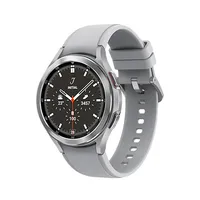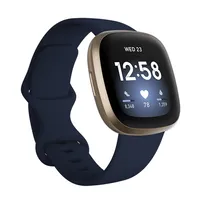TechRadar Verdict
The Samsung Galaxy Watch 4’s headline feature is a revamp of its software that combines the look and feel of Samsung’s existing Tizen platform and the functionality of Wear OS. It has good fitness features, strong battery life and a comfortable design. There are some compatibility issues, which may frustrate some potential buyers, but largely the Galaxy Watch 4 is an interesting iteration of Samsung’s top smartwatch formula.
Pros
- +
Excellent performance
- +
Interesting new software
- +
Lightweight design
Cons
- -
Limited compatibility
- -
Lacks rotating bezel
- -
No exciting fitness upgrades
Why you can trust TechRadar
Two-minute review
The Samsung Galaxy Watch 4 is a sequel to one of our favorite smartwatches ever, and it’s the first time in a while that we’ve seen the company embrace Wear OS software. It’s not your typical Wear OS watch though; it’s running Wear OS 3 overlaid with One UI Watch 3, and Google has collaborated with Samsung to create this operating system.
It's worth noting that this isn't the newest model anymore, that honor goes to the Samsung Galaxy Watch 5 and Samsung Galaxy Watch 5 Pro, which were both unveiled in August 2022. Though on paper they don't sound like enormous upgrades - other, perhaps, than when it comes to battery life.
Back to the Watch 4, and on paper the overall upgrade here versus the previous model is also limited in software and hardware, but as this Samsung Galaxy Watch 4 review points out, it's suitable for anyone who’s looking for a top-end smartwatch that can track workouts, as well as offer a lot of other smart features that many alternative wrist companions can't.
That said, the Galaxy Watch 4’s compatibility is inexplicably worse than prior Samsung watches. If you own an iPhone, this won’t work with it, and while it’s compatible with all modern Android phones, you’ll need to own a Samsung smartphone to access some features, such as blood pressure or ECG measurements.
It's certainly disappointing given Samsung’s previous smartwatches are some of the best in terms of compatibility. We’d still say the Watch 4 is worth picking up even if you own a non-Samsung Android phone, but you should note that there are limitations.
Given those caveats, there's plenty to like about the watch's design. There’s a virtual rotating bezel – a returning feature from the Samsung Galaxy Watch Active 2 – which, in conjunction with two buttons on the right-hand side, allows for easy navigation around the smartwatch’s menus. Some may miss the physical rotating bezel from the Galaxy Watch 3, but this is a good alternative.
The fitness features here aren’t hugely different to what we’ve seen before, but there is a new body composition tool that gives you a rough idea of your body fat percentage. We’ve found that GPS, heart rate monitoring and other fitness features are well thought out on the Galaxy Watch 4.
Sign up for breaking news, reviews, opinion, top tech deals, and more.
Battery life isn’t a huge concern on the Galaxy Watch 4, but it isn’t the longest lasting smartwatch we’ve ever seen. It’ll last up to around two days with normal to intensive usage, and around three days if you’re not working out or using features like GPS.
Introduced alongside the Samsung Galaxy Z Fold 3 and Galaxy Z Flip 3, the Galaxy Watch 4 is joined by a Samsung Galaxy Watch 4 Classic – you should look at that smartwatch if you want a physical rotating bezel, which is the major difference between the two devices.
As for the Galaxy Watch 4, this is the best smartwatch for anyone who owns a Galaxy smartphone. If you own a different Android phone, it’s still a worthy choice for your next smartwatch, but there are caveats around the features mentioned above.
It's also worth noting that the Samsung Galaxy Watch 5 will probably land in or around August 2022, so you might want to consider waiting for that.
Samsung Galaxy Watch 4 release date and price
Samsung Galaxy Watch 4: Price and availability
- Went on sale August 26, 2021
- Cheapest option is $249.99 / £249 / AU$399
- Options go up to $329.99 / £309 (about AU$580)
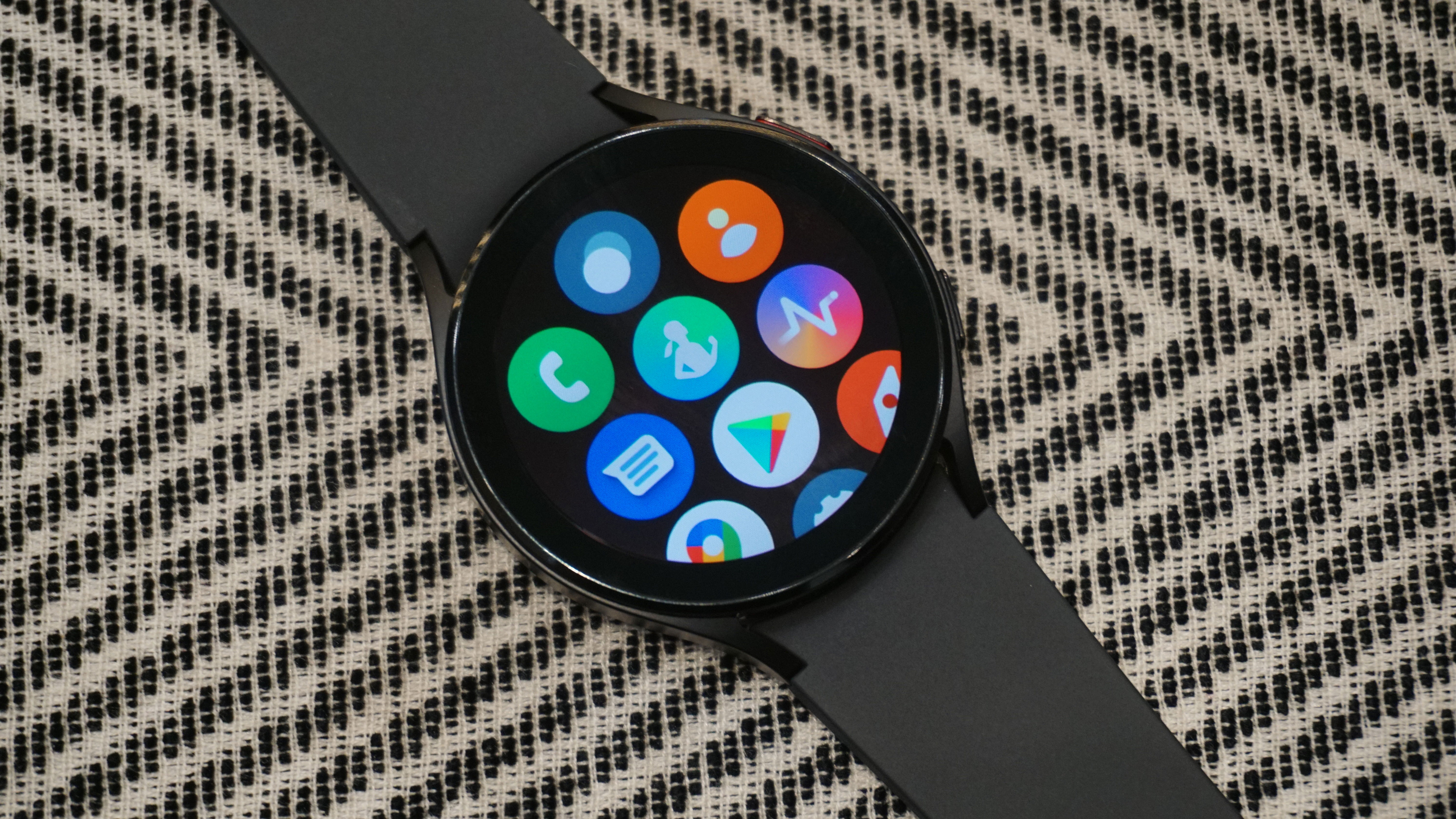
Screen sizes: 40/44mm
Weight: 25.9g/30.3g
Software: Wear OS 3.0
RAM: 1.5GB
Storage: 16GB
GPS: Built-in
Battery capacity: 247 / 361mAh
Wireless charging: Yes, Qi
The Samsung Galaxy Watch 4 is available now in the US and UK where it went on sale on August 26, 2021. It's also out in Australia, which got it on September 10, 2021.
There are two sizes of the Galaxy Watch 4. The smaller 40mm version costs $249.99 / £249 / AU$399 for the Bluetooth version, while the LTE version costs $299.99 / £289 / AU$499.
If you like a larger watch, the 44mm model costs $279.99 / £269 (about AU$500) in its Bluetooth form and $329.99 / £309 (about AU$580) for the 4G variant. This is far cheaper than the Galaxy Watch 3, but that’s because this device is largely a replacement for the Galaxy Watch Active 2.
If you shop around you may also be able to get the Samsung Galaxy Watch 4 for less than the prices above, since it's not so new anymore. You might also want to consider waiting for a sales event such as Amazon Prime Day, which in 2022 is happening on July 12 and 13.
If you want a larger smartwatch with a physical rotating bezel, you’ll want to opt for the Galaxy Watch 4 Classic. That’s a separate product line this time, although a lot of the specs are similar between that device and this one.
The Galaxy Watch 4 Classic 42mm costs $349 / £349 / AU$549 for the Bluetooth model and $399 / £389 / AU$649 for the LTE model. The 46mm model comes in a Bluetooth version for $379 / £369 / AU$599, or an LTE variant at $429 / £409 / AU$699.
As with the standard Galaxy Watch 4 though, you can often find the Watch 4 Classic at reduced prices.
Samsung Galaxy Watch 4 design and display
Samsung Galaxy Watch 4: Design and display
- 40mm and 44mm models
- Black, gold, green or silver versions
- Virtual rotating bezel - not physical
The Samsung Galaxy Watch 4 is a slimline smartwatch with a design that sits comfortably on your wrist. If you’re looking for something a touch chunkier, or you’d like a rotating bezel, you should opt for the Samsung Galaxy Watch 4 Classic.
For those looking for a slimmer design, the Galaxy Watch 4 offers that, with two buttons on the right-hand edge and little else to detract from its sleek looks. It comes in two models, one with a 40mm watch face and another with a 44mm body.
Both models are made of aluminum. The dimensions of the 40mm model are 40.4 x 39.3 x 9.8mm with a weight of 25.9g, while the 44mm is 44.4 x 43.3 x 9.8mm and weighs 30.3g.
We’ve worn both models, and we found both to be a comfortable fit without weighing down our wrist.
We’ve used the 44mm model for a longer period than the smaller model, and we found that to be a suitable size (note that this writer is an adult man). It’s comfortable to wear throughout the day, although it may not be the best fit to wear at night for sleep tracking.
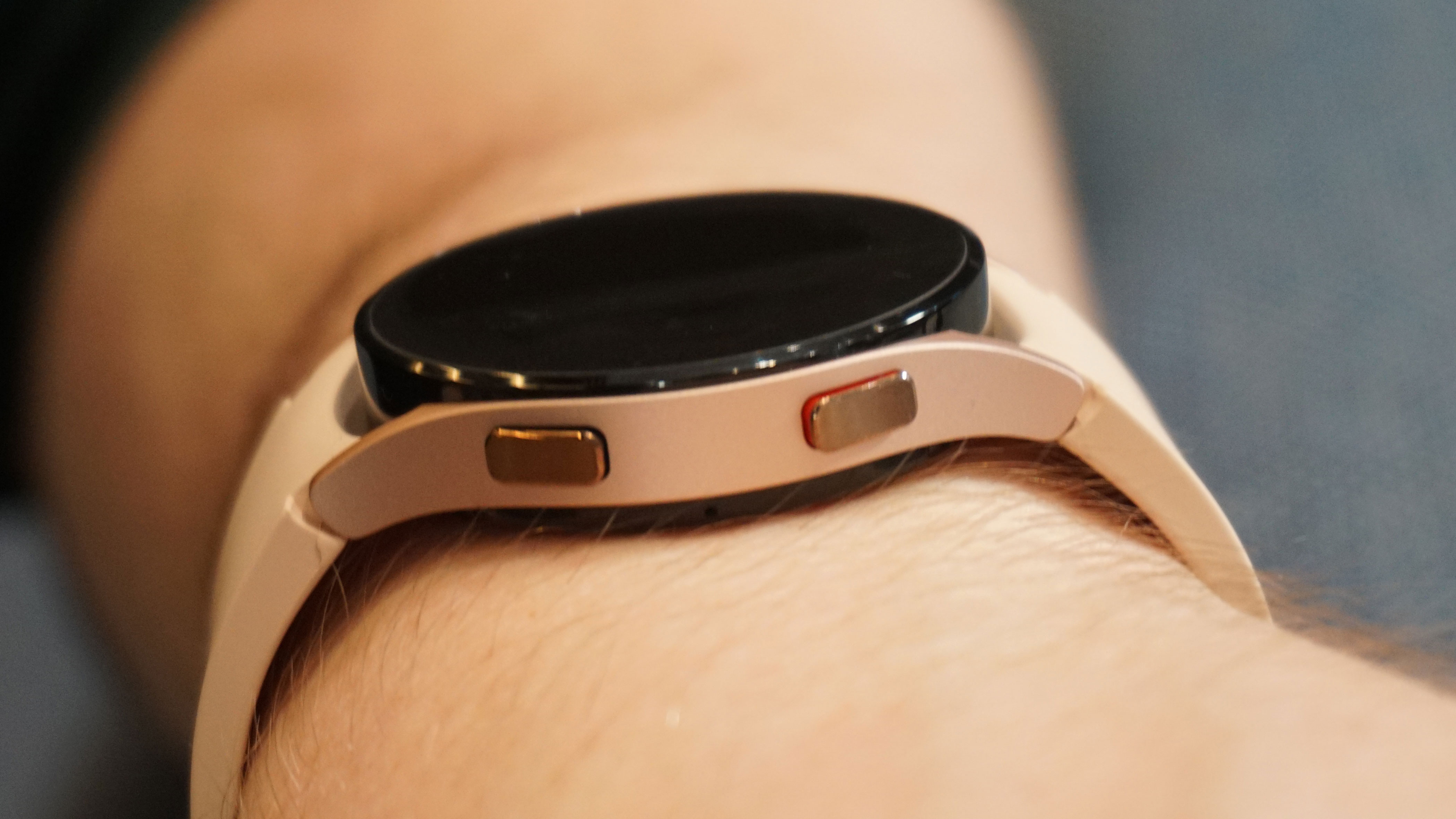
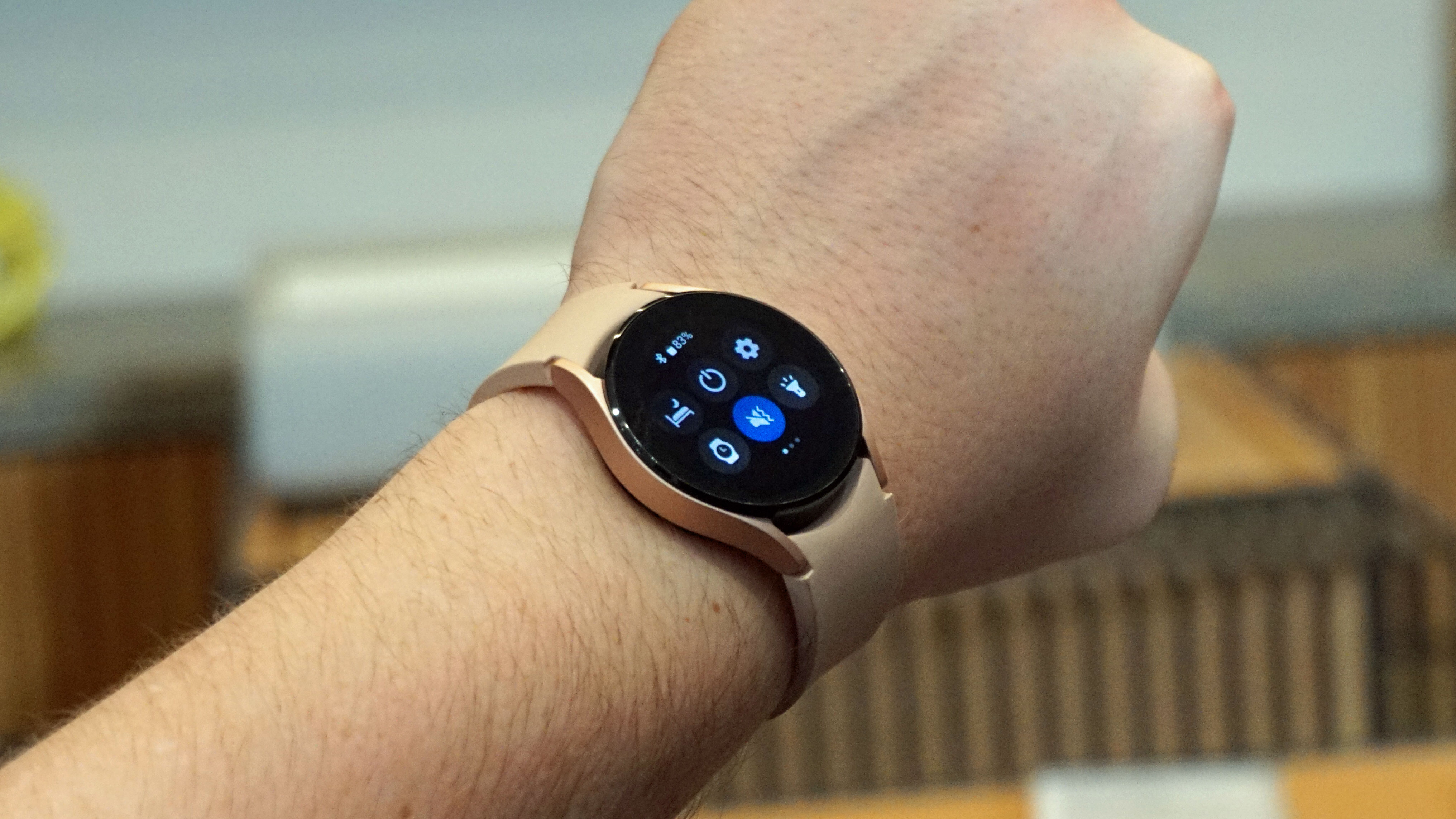
The screens on both Galaxy Watch 4 models look bright, and we found them easy to read. The resolution is also impressive, with the 40mm watch featuring a 396 x 396 resolution and the 44mm model taking that up to 450 x 450. That’s 330 pixels per inch for both models.
One unique feature of the Galaxy Watch 4 compared to other smartwatches is its ‘virtual’ rotating bezel feature. There’s no physical rotating bezel here – go for the Watch 4 Classic if that’s a feature you want – but you can run your finger around the black bezel of the screen to rotate through menus and access different features.
Each model is also IP68 water- and dust-resistant, which means you can take them into water up to five meters deep. A word about the supplied watch band though – it’s made of a new material that may not handle intense workouts well, as we found it left something of a rash on our wrist.
You may want to invest in a band made from different material if you regularly wear your watch to the gym.
Color options vary between models, too. The 40mm Watch 4 comes in black, gold and silver, while the 44mm model comes in black, green and silver. All of these are relatively muted colors, so you may want to buy another strap if you want a bolder shade on your wrist.
Samsung Galaxy Watch 4: Performance and software
- Exynos W920 chipset with 1.5GB RAM and 16GB storage
- Wear OS 3.0 software
- Access to Play Store and lots of apps
The Watch 4 features Samsung’s own Exynos W920 chipset and 1.5GB of RAM. Throughout our testing time we’ve found this to be enough power to run a variety of apps smoothly without any slowdown. This is one of the fastest smartwatches we’ve ever used.
This speed isn’t as noticeable as it might be on a smartphone or a laptop, but it is noticeable when compared to other smartwatches, and it allows you to use a variety of apps while the GPS features are running, for example.
There’s 16GB of storage on both models of the Galaxy Watch 4. We found that about 8GB of this was taken up with the OS and preloaded apps, which leaves you with the same again for your own apps and music.
Its software is where the Galaxy Watch 4 shines. Samsung isn’t using its own Tizen wearables software here, and is instead re-embracing Google’s Wear OS, although with its own spin.
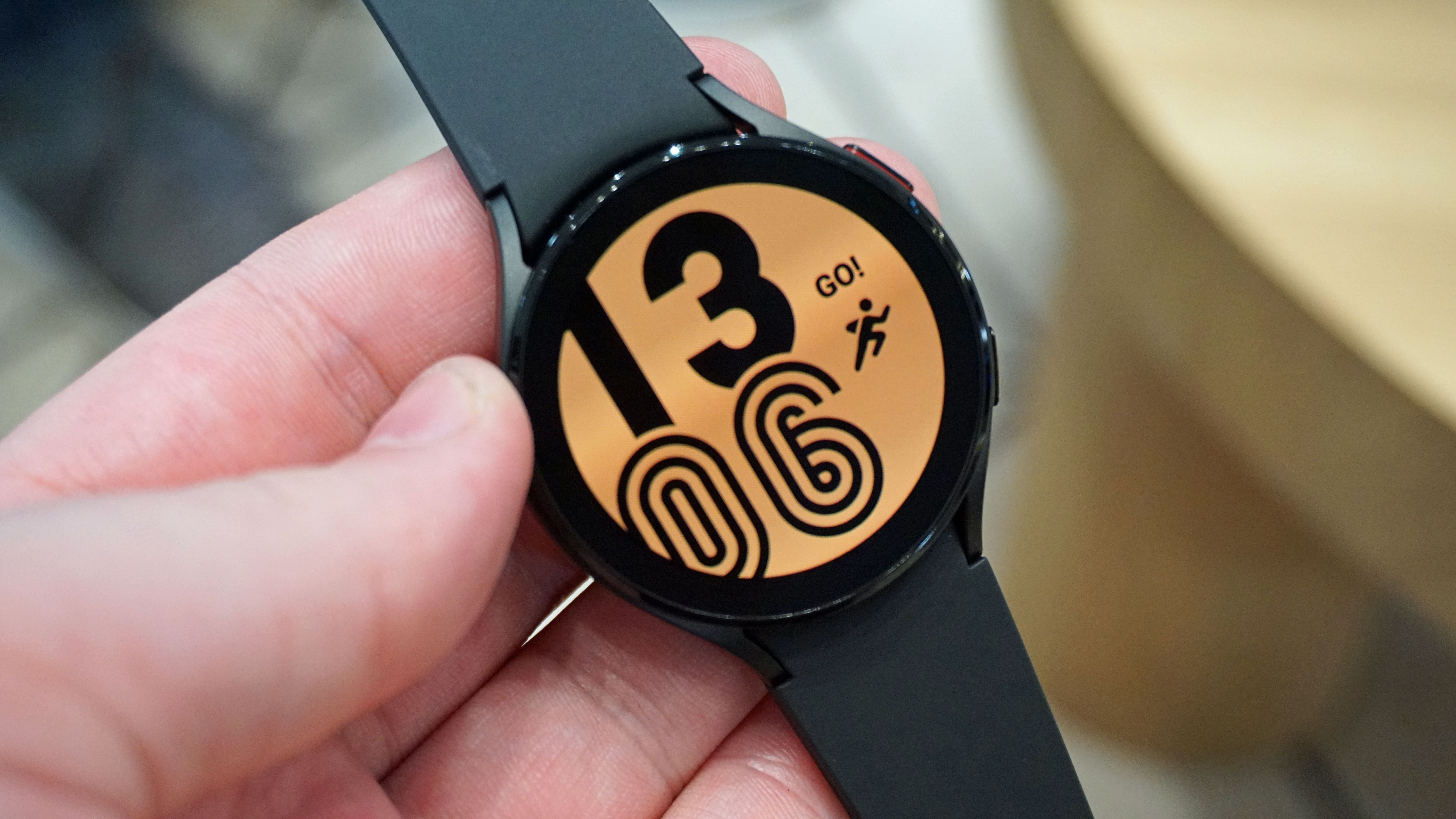
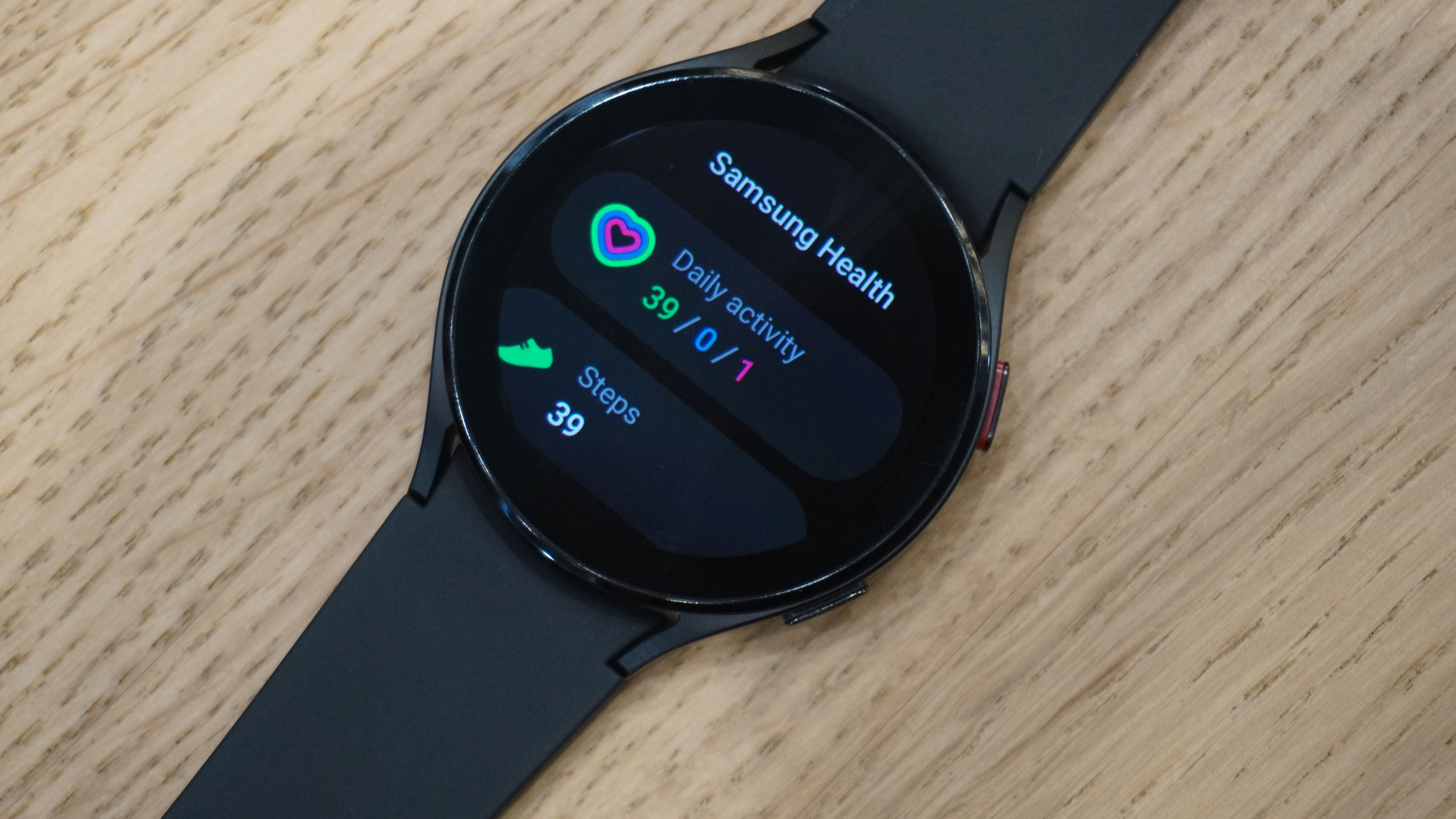
You’d be forgiven for being confused here. Tizen has been the focus of Samsung’s software efforts in recent years, and the software running on the Galaxy Watch 4 looks similar to it.
Instead, this is Wear OS 3 but with Samsung’s own skin, called One UI Watch 3, on top. It includes a variety of Samsung apps that you’ll be used to if you’ve had a Galaxy Watch before, but this is primarily Wear OS.
That means you’ve got access to the Google Play Store, and while Wear OS isn’t the best-supported platform apps-wise, you’ve got more/a lot more/whatever options than you have on Tizen. The design, meanwhile, still feels distinctly Samsung.
The software on the Galaxy Watch 4 looks good and works smoothly, plus you’ll find all of the apps available on the Google Play Store are ready and waiting. This is a better solution than Tizen, but it keeps all the benefits that made Tizen software great.
Samsung Galaxy Watch 4: Fitness
- New BioActive sensor for improved tracking
- Body composition tools
- All the standard smartwatch fitness features
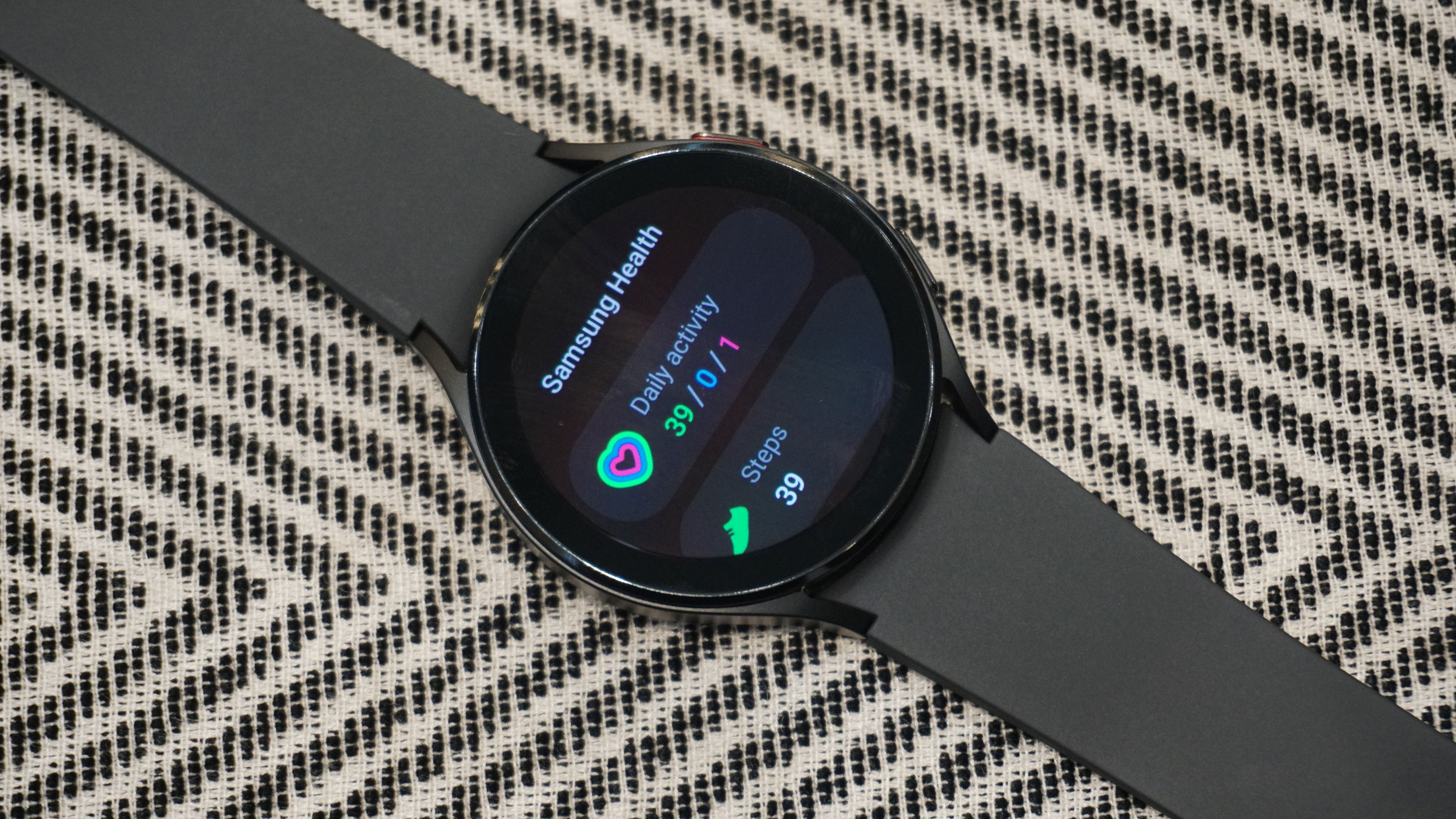
The Samsung Galaxy Watch 4 comes with a whole host of health and fitness features, including GPS for tracking runs, an optical heart rate sensor, and ECG support.
The big fitness changes come in the form of a new 3-in-1 BioActive Sensor that enables the watch to monitor heart rate, blood oxygen levels and body composition. The last in that list is the only new feature, but this is the first time the sensors have been combined.
Samsung says its body composition measurement tools enable you to see key fitness metrics such as skeletal muscle mass and body fat percentage. These scans are easy to run, although you’ll need to stay still in order for them to work.
The stats you’ll get include a body fat percentage score, skeletal muscle, fat mass, body water and BMI. It’ll also give you a rough idea of the healthy range for your sex, weight and height.
It’s hard to tell how accurate these various metrics are, but we found it useful to have at least a rough idea of them, and you’ll be able to track these over a period of time to see if you can improve the results.
The heart rate monitor proved accurate, with our results tallying with measurements taken using other devices. The heart rate monitor worked best within Samsung’s own apps, but you can also apply these features to third-party Wear OS tools like Strava and Nike Running Club.
We also found the GPS features worked well when we took the watch running with accurate positioning when compared to other devices.
One important thing to note is the limited compatibility of some fitness features. The ECG and blood pressure monitoring tools are only available when you connect the Galaxy Watch 4 to a Samsung smartphone.
This is a frustrating element, and it means this watch may not be the best choice for you if you don’t own a Samsung phone. Alternative devices from brands such as Garmin offer similar features, but across any phone.
Samsung Galaxy Watch 4: Battery life
- 247mAh or 361mAh battery
- Roughly two days use per charge
- Charging pad included in box
The 44mm Galaxy Watch 4, which is the model we reviewed, is powered by a 361mAh battery, and battery life proved strong during our testing time - we found the smartwatch would last at least two days from a single charge even with intensive use, and if you’re not regularly using fitness features, you can expect the watch to last for a full three days.
The 40mm version comes with a smaller 247mAh cell, and we’ve yet to be able to test how well this performs. Our experience with previous Samsung smartwatches has seen a slight difference in battery life between the smaller and larger model, but you shouldn’t expect the 40mm variant to be dramatically different.
There’s a charging pad included in the box, which is a bit of a surprise as Samsung has dropped these from its smartphones in recent years. That said, you’ll just get the cable here so you’ll have to find a charging block or plug it directly into a USB compatible device.
Should you buy the Samsung Galaxy Watch 4?
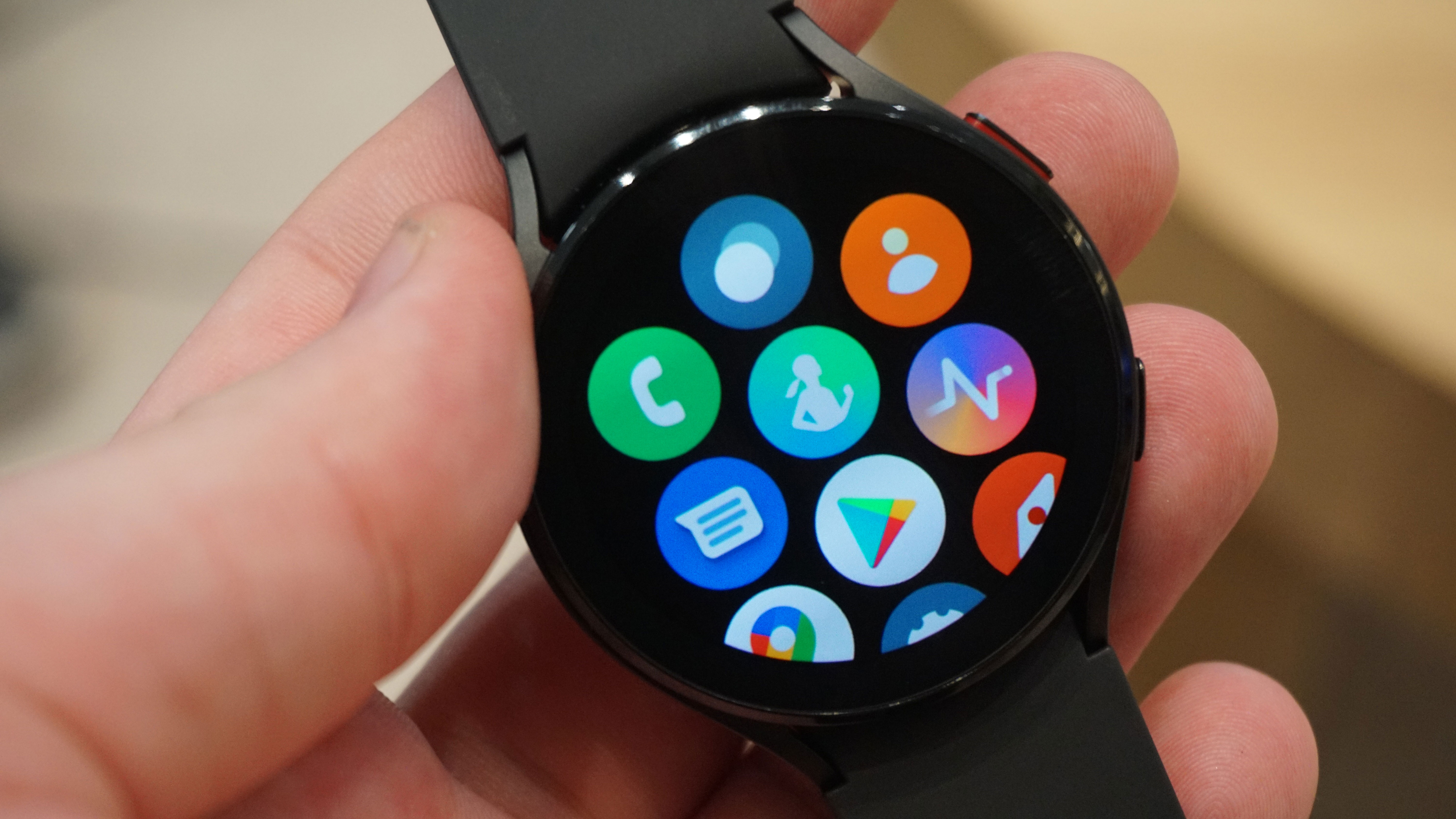
Buy it if…
You own a Samsung phone
Some of the best Samsung Galaxy Watch 4 features are locked to Samsung phones, so if you already own one of its handsets you’ll be able to make the most out of this smartwatch.
You want great smartwatch software
Samsung’s Tizen look has developed a lot in recent years, and combining it with the functionality of Wear OS - giving you access to the Google Play Store’s full range of wearable apps.
You want a solid fitness experience
The Samsung Galaxy Watch 4 isn’t the most highly-specced fitness watch you can buy, but it’s suitable for most people with the core features of GPS, a great heart rate monitor and a variety of other tools too - although you’ll need a Samsung phone in order to use some features.
Don't buy it if…
You own an iPhone or non-Samsung Android phone
Samsung has dropped support for iPhones on the Galaxy Watch 4, which is frustrating for those who have an iPhone but don’t want an Apple Watch. And, as we’ve mentioned, some of the health monitoring features aren’t compatible with Android phones from other brands.
You own a Samsung Galaxy Watch already
If you own a recent generation of the Galaxy Watch, you probably won’t need the Galaxy Watch 4. There isn’t enough that’s new here, especially over the Galaxy Watch Active 2, so it may not be for you.
You want a rotating bezel
One of the most exciting unique features of the Galaxy Watch series is its spinning bezel, and you won’t get that on the standard Galaxy Watch 4. If you want the physical bezel, you’ll want to look at the Galaxy Watch 4 Classic.
Also consider
If you've found that this Samsung Galaxy Watch 4 review doesn't cover all your bases, here are some other wearables to consider.
Samsung Galaxy Watch 4 Classic
If you need the very best, the Classic version of the Watch 4 could be for you. Its key upgrade its its design, with a hardy material and rotating bezel which helps you navigate the watch.
Read our full Samsung Galaxy Watch 4 Classic review
Apple Watch 7
Apple's contemporary to the Galaxy Watch is the Apple Watch 7, which runs WatchOS, and works well with an iPhone if you have one of those.
Read our full Apple Watch 7 review
Fitbit Versa 3
The Fitbit Versa line of smartwatches is Fitbit's most 'mainstream' wearable line, and the Versa 3 costs less than the watch 4 despite having lots of useful features.
Read our full Fitbit Versa 3 review
First reviewed: August 2021
How we test
We pride ourselves on our independence and our rigorous review-testing process, offering up long-term attention to the products we review and making sure our reviews are updated and maintained - regardless of when a device was released, if you can still buy it, it's on our radar.

James is the Editor-in-Chief at Android Police. Previously, he was Senior Phones Editor for TechRadar, and he has covered smartphones and the mobile space for the best part of a decade bringing you news on all the big announcements from top manufacturers making mobile phones and other portable gadgets. James is often testing out and reviewing the latest and greatest mobile phones, smartwatches, tablets, virtual reality headsets, fitness trackers and more. He once fell over.

